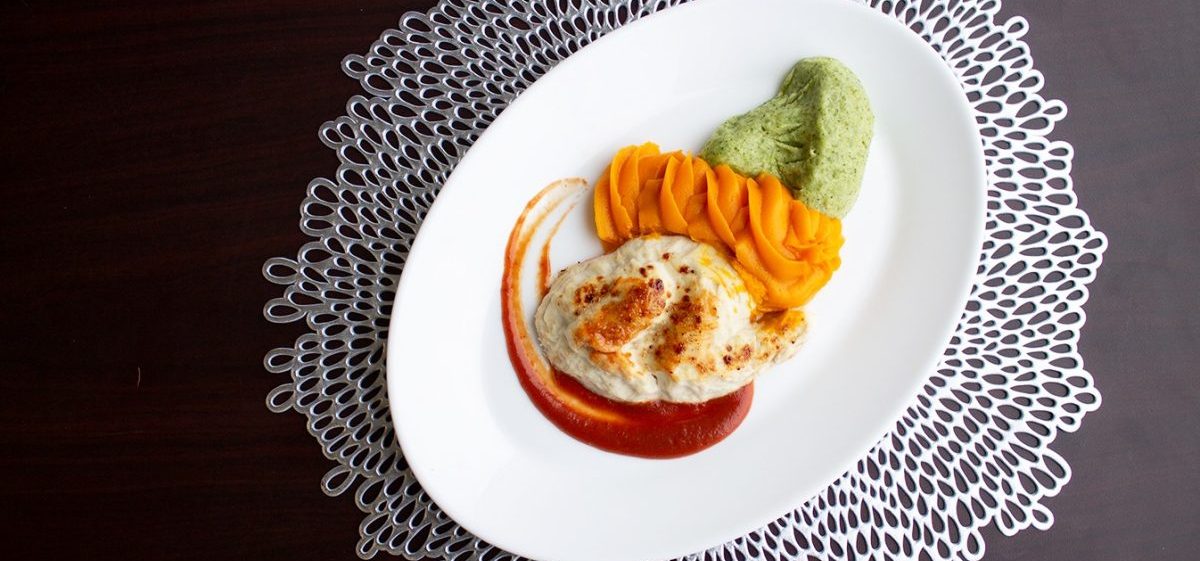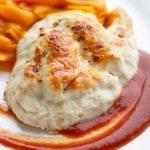Last updated on June 28th, 2023
It’s estimated that the prevalence of dysphagia in residential care communities is around 50-75%. Dysphagia is a condition in which someone has difficulty chewing or swallowing. It can lead to reduced appetite and/or malnutrition due to decreased food intake.
While the natural aging process can lead to dysphagia, stroke, and dementia patients have higher rates of the condition, and those in senior living communities may have a higher risk as well.
Because of high rates of dysphagia, your dining program needs to be able to address the needs of these patients and provide them with nutritious meals that they can eat independently.
How is Dysphagia Treated?
In senior living communities, dysphagia is typically treated with a texture-modified diet. Patients receive thickened liquids as meals to reduce the risk of aspiration (thin liquids, like water and juice, may cause patients to aspirate). However, the problem with this treatment is that the modified food can be unappealing to patients and lead to a lower quality of life if not presented well.
Some dysphagia patients receive food via nasogastric, post-pyloric, or percutaneous endoscopic gastrostomy tubes instead of texture-modified foods. While it seems like avoiding chewing might eliminate the risk of aspiration, nasogastric, post-pyloric, or percutaneous endoscopic gastrostomy tubes do not reduce the risk.
Another way to treat dysphagia is through speech and swallowing therapy. A speech-language pathologist will evaluate patients and recommend treatment in the form of diet, swallow intake, positioning, and swallowing or tongue-strengthing exercises. When the muscles in the mouth or throat are weak, swallowing can be a tough task. Tongue strengthening exercises can help a person use their tongue to better move food from the mouth to their pharynx.
Dysphagia and Your Dining Program
The IDDSI (International Dysphagia Diet Standardization Initiative) created a framework to develop a “new global standardized terminology and definitions to describe texture-modified foods and thickened liquids used for individuals with dysphagia of all ages, in all care settings, and all cultures.”
To develop a dining program that meets all levels of the IDDSI and the needs of your residents, your team has to learn the right ways to prepare foods for dysphagia patients. Consider also working with a speech-language pathologist as you develop these programs to help you understand how to thicken foods, what position your residents should be in while eating food, and any best practices for after eating.
As we mentioned above, the problem with texture-modified foods is that they don’t look appealing to residents. When someone isn’t excited about the food in front of them, they may eat less of it and dysphagia patients are already at risk for malnutrition. It’s crucial that they eat their meals.
Before preparing meals, make sure your kitchen has the proper equipment to serve those who require texture-modified foods. You should have multiple food processors and blenders available.
It can be difficult to make texture-modified foods taste as good as the other dishes you serve, but it’s not impossible. Some foods are better for pureeing than others. For example, celery is tough, stringy, and doesn’t produce a tasty texture. Fruits and vegetables like asparagus, cauliflower, and pumpkin are much better choices for pureed foods. For some recipes, you may be inclined to add water to make the food smoother, but we encourage you to think of some more flavorful options, like broth, juice, yogurt, or hummus.
And don’t forget extra bursts of flavor. You wouldn’t make a non-pureed dish without seasoning, so think of texture-modified foods the same way. Don’t be afraid of garlic, spices, or an innovative sauce to give the meal a little more appeal.
With texture-modified foods, you also may need to work a little harder to make the meal look good on the plate. If you’re serving a dish with multiple pureed components, make sure they each have their own section on the plate. The last thing you want is for all of the pureed liquids running together to create an unappetizing mess. Don’t be afraid to pipe the food creatively or to make fun designs with sauces.
Ask for Help
Culinary Services Group created a program called Appeal to help better serve patients with dysphagia. The goal of this program is to artfully shape and present puréed foods into something more familiar and comforting. There are meals in this program for all levels of the IDDSI (International Dysphagia Diet Standardization Initiative) spectrum of modified eating.
When creating this program, we partnered with Lyons Magnus to create a standard of food presentation that can be replicated consistently across all the communities we work with. The program offers bite-sized foods with soft textures for those with some ability to chew, and also offers a dignified approach to puréed diets by molding proteins and vegetables into appealing shapes and presentations.
Culinary Services Group supports the communities that use this program with all of the resources needed to implement it. Our dietitians and chefs prepare customized menus specific to your residents’ unique needs. We’ll also provide continuous training and support to staff. By creating visually appealing presentations, we set our goals to nourish your community and improve the quality of life for those we serve.
Take a look at some of the foods we’ve created in our Appeal program:












